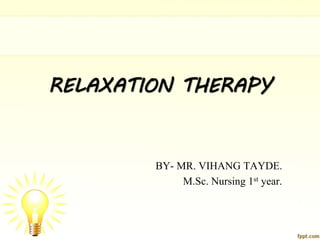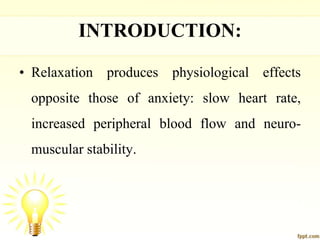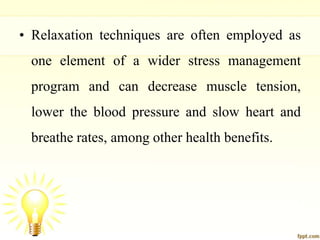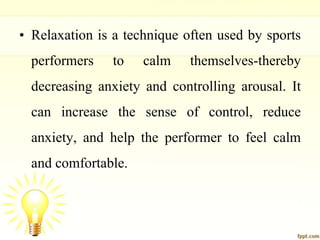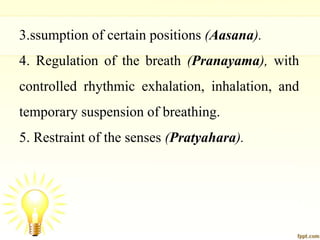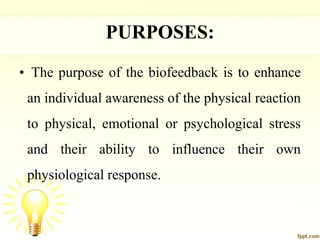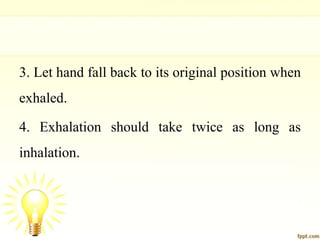The document discusses relaxation therapy, outlining its physiological effects, techniques, and benefits, including reducing anxiety and improving mental health. Techniques include progressive muscle relaxation, mental imagery, meditation, yoga, biofeedback, physical exercises, and deep breathing. The role of nurses in supporting individuals through relaxation therapy is also emphasized to help manage stress and enhance well-being.
